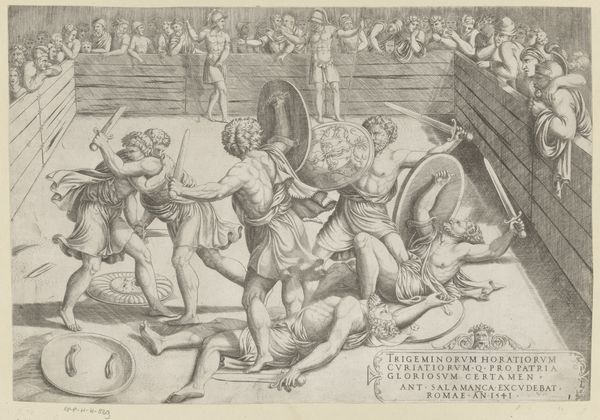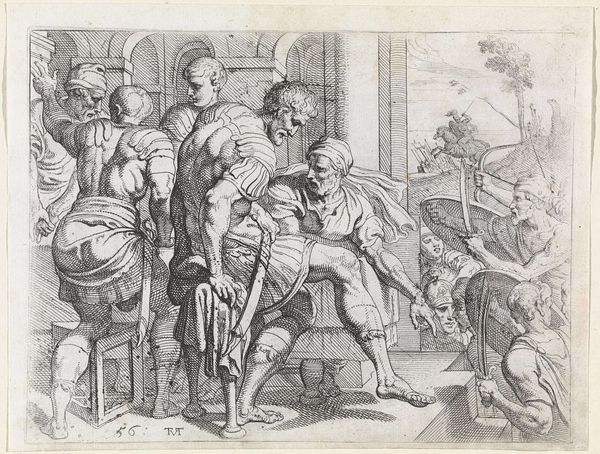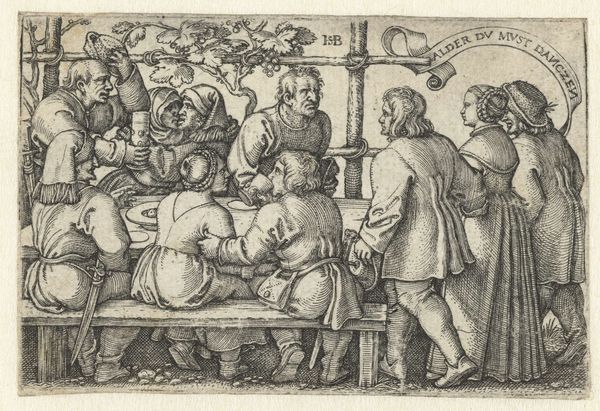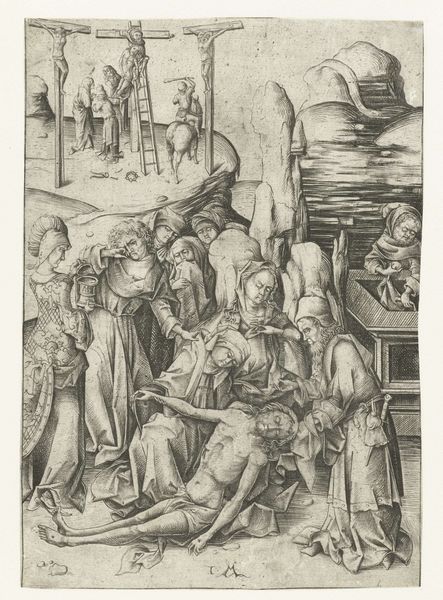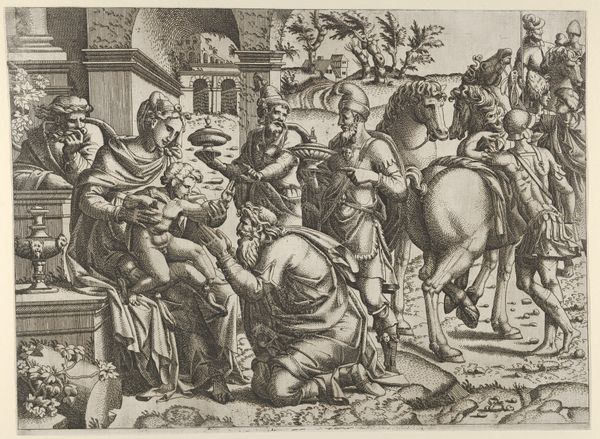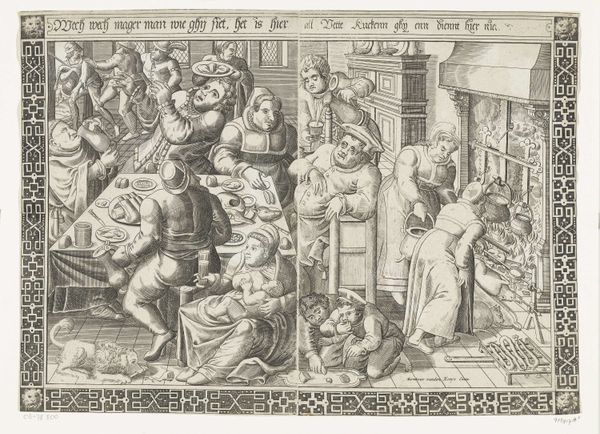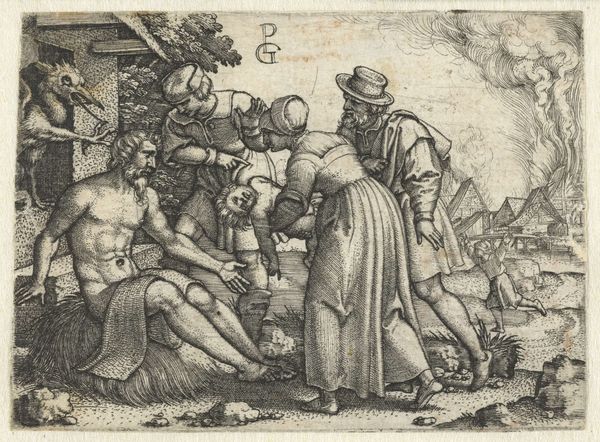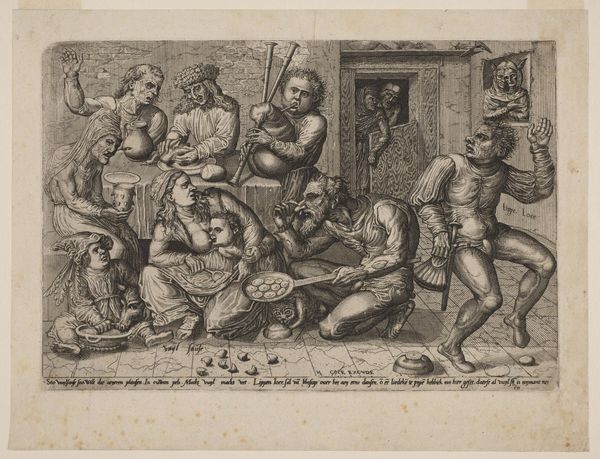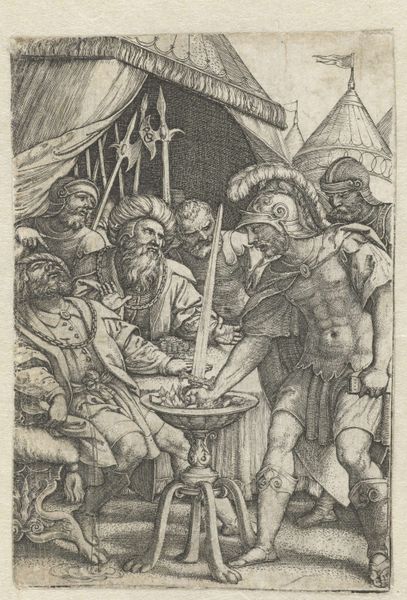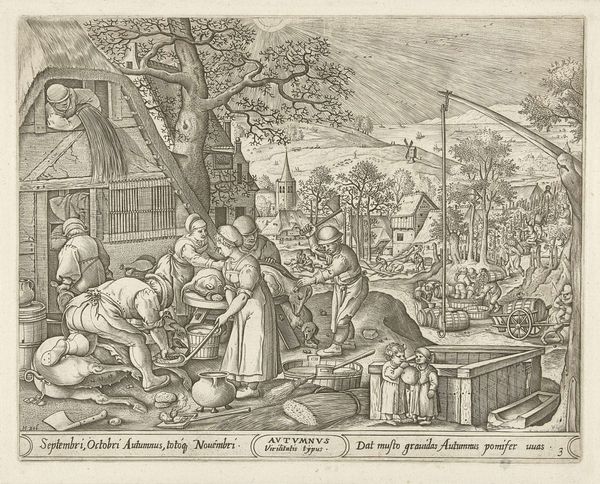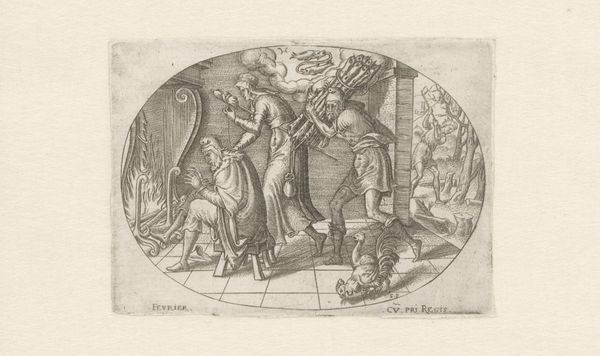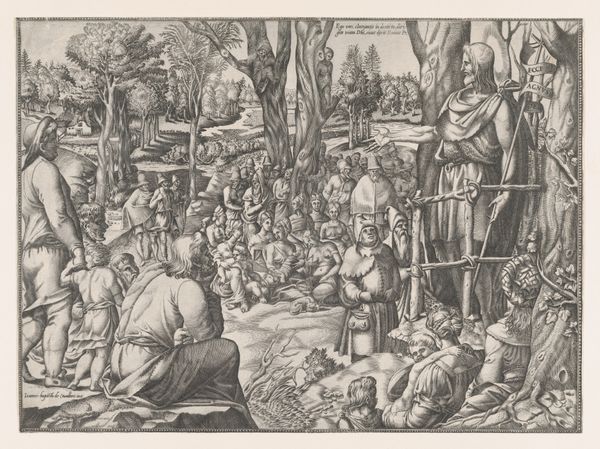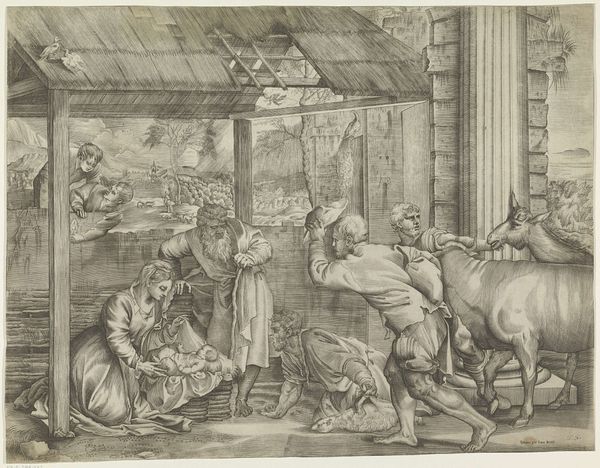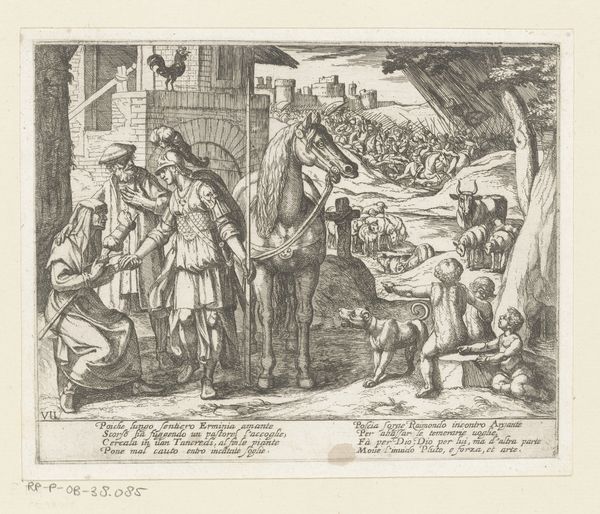
print, engraving
#
narrative-art
#
dutch-golden-age
# print
#
figuration
#
genre-painting
#
engraving
Dimensions: height 65 mm, width 93 mm
Copyright: Rijks Museum: Open Domain
Dirk van Hoogstraten created this etching of beggars dining in a hut sometime between 1620 and 1640. This was a period of economic expansion and social stratification in the Dutch Republic. The image presents a scene of apparent destitution. But how might its original audience have understood it? Was it intended to provoke compassion or disgust? Printmaking was often used in the Dutch Golden Age to disseminate moralizing messages. Prints were relatively cheap to produce and purchase, so they were often acquired by those further down the social hierarchy. This kind of imagery played a role in shaping the public's attitudes toward class and poverty. Did it challenge existing hierarchies? Or did it aim to reinforce them? Art historians can analyze the scene depicted here and the artist’s choices to better understand the print’s social function in its original context. We can look to the culture of Dutch printmaking for clues to the meaning of this artwork and the role it played in the society of its time.
Comments
No comments
Be the first to comment and join the conversation on the ultimate creative platform.
